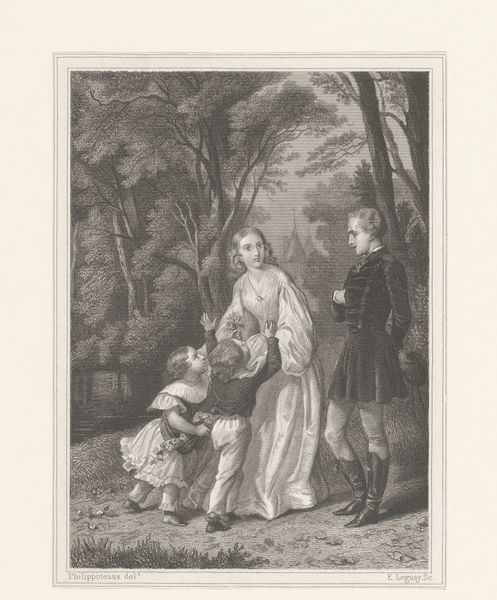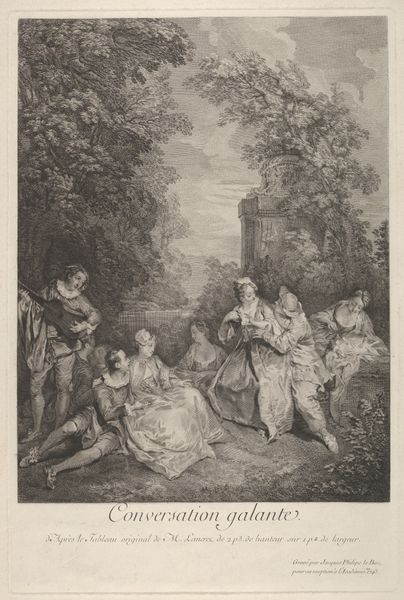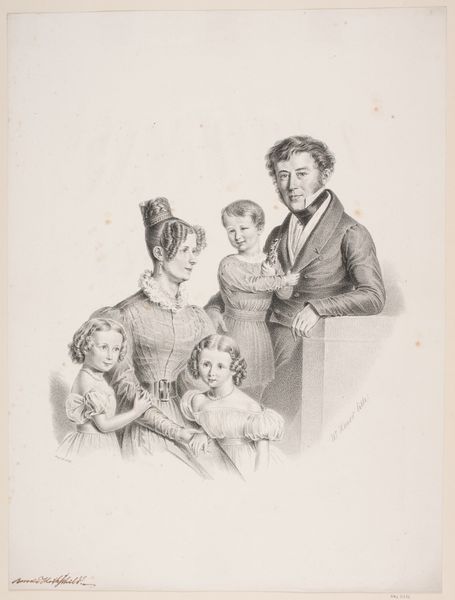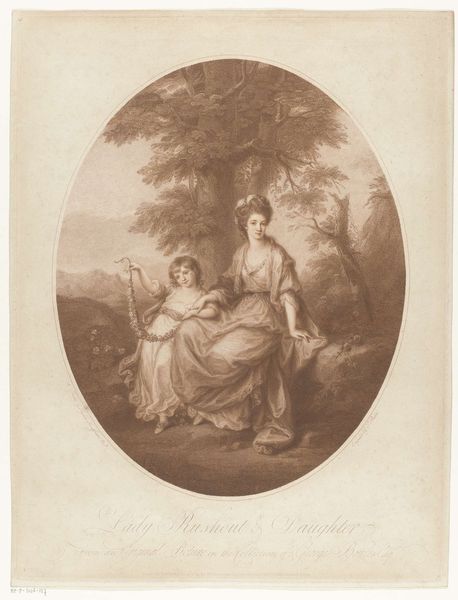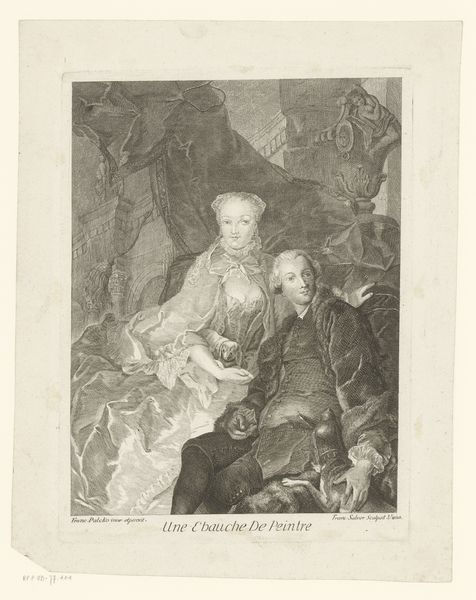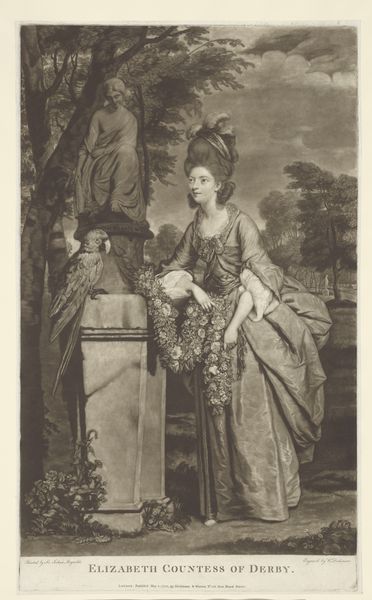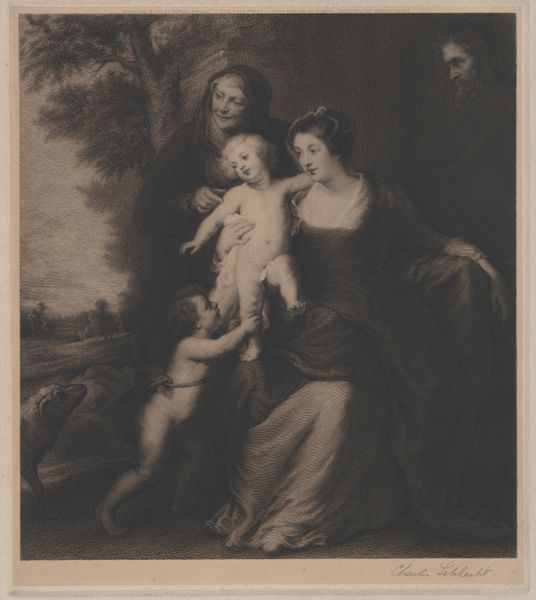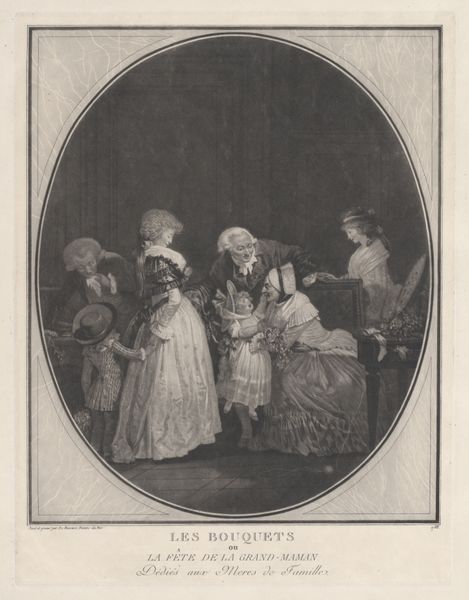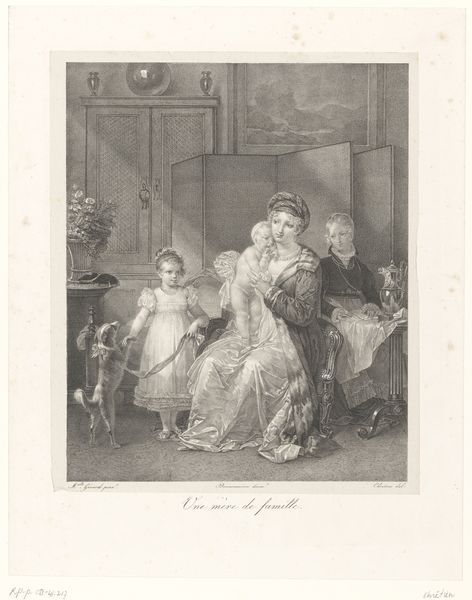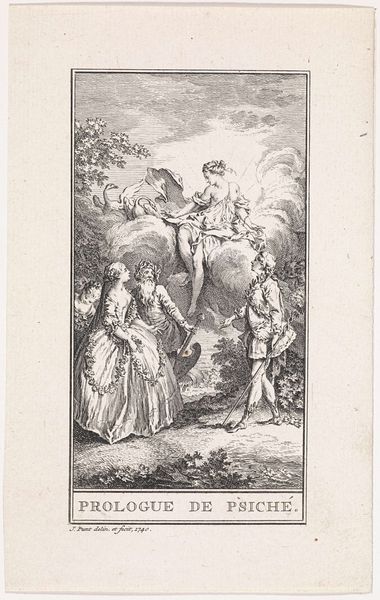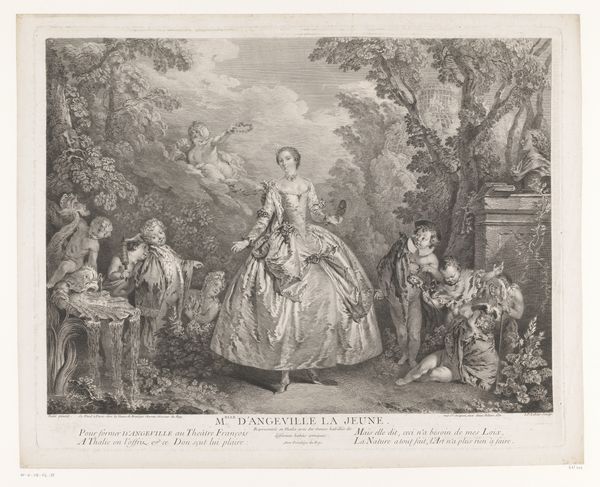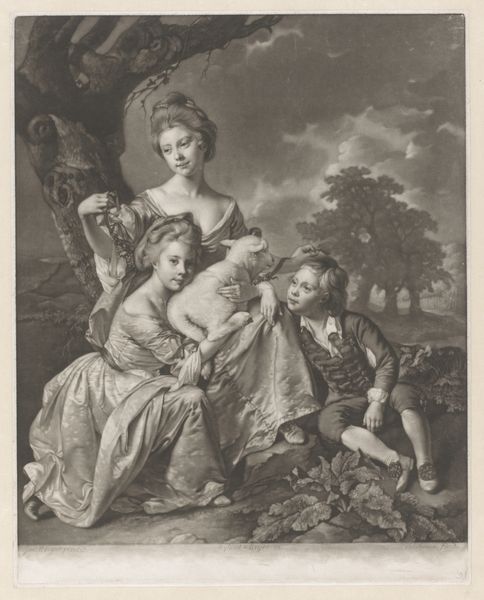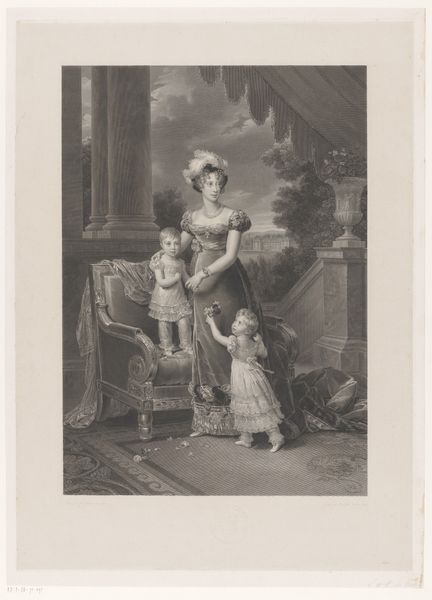
The Family Promenade, also called Philippe Mercier, His First Wife, and Family c. 1725
0:00
0:00
drawing, print, etching, paper
#
portrait
#
drawing
#
baroque
# print
#
etching
#
landscape
#
paper
#
group-portraits
#
genre-painting
Dimensions: 372 × 310 mm
Copyright: Public Domain
Curator: Immediately, there’s such stillness. A casual moment suspended, perhaps? There's such an emotional delicacy in this gathering. Editor: Philippe Mercier's "The Family Promenade," from around 1725, offers us a glimpse into the artist's life, depicting him, his first wife, and their children. Done as a print, more specifically an etching, and crafted on paper, it showcases a family amidst an elegant landscape. Curator: That landscape melts into feeling. I’m immediately drawn into the textures. Look at the mother's gown; you can almost feel the weight of it, the formality and elegance of the period rendered in such delicate lines. Do you find it ironic this snapshot has become frozen in time? I mean, does a slice of life feel strange from that vantage point? Editor: Absolutely. And consider the role of printmaking in circulating these images. Etchings like this democratized art to a degree. Mercier wasn’t just portraying his family; he was creating a commodity for wider consumption, a window into a lifestyle aspired to by many. The etching as a product speaks to a developing consumer culture. It raises questions about value and labor: how are these images produced, distributed, and consumed? Curator: But also, don't you sense a certain sadness there? It feels... brittle somehow. Perhaps it’s just my projection but, you know, they're outside in this pretty area, but they seem separated, lost even, not truly interacting but only existing alongside. Like figures in a landscape but in their own ways, self-obsessed, caught up in the moment’s vanity, which, of course, it could be only an artist depicting in that moment, or maybe an intentional metaphor about something that remains, at this time, unknowable, as only they experienced what it might mean, beyond their clothes, outside of this context. Editor: Right, the technique informs that interpretation. Etching allows for incredible detail but also creates a certain distance. The image is reproduced through a laborious process, which removes a degree of the artist’s direct touch compared to a painting. So the feeling that maybe is not quite "real" but that we perceive has to do also, in my mind, to how it was built and its function inside of that economic exchange in which that family—Mercier's—were moving. I agree; there is melancholy, though, or an ambiguity, even that I believe resides in the intersection of labor and love or how that process created and froze a precise vision in a mass production medium, on paper, of Mercier’s era. Curator: Exactly. It’s this quiet strangeness that grips me, that’s captured the stillness; perhaps only the etching can render like this: an echo we catch on this journey!
Comments
No comments
Be the first to comment and join the conversation on the ultimate creative platform.
